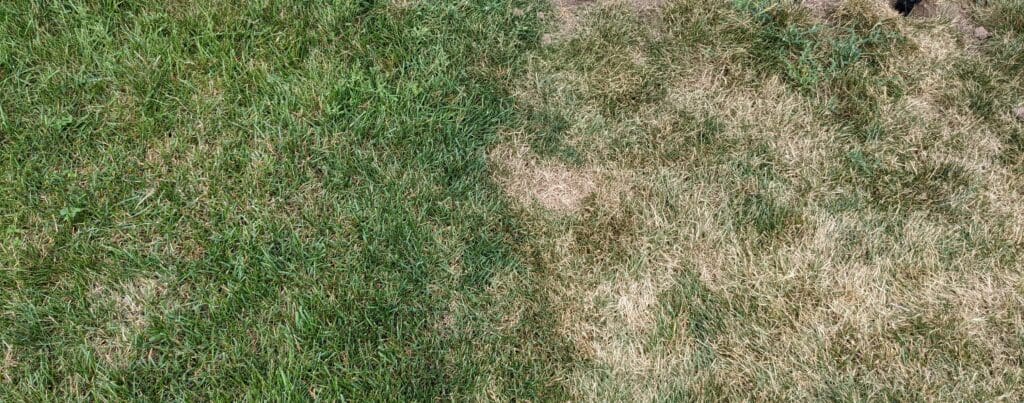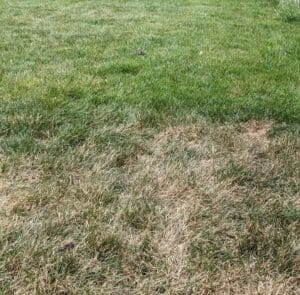The Science Behind Lawn Watering
Read MorePosted on: Aug 30, 2022Raunie
Each Summer the most common problem our clients have is drought stress. I’m here to talk about the science behind lawn watering and how to strip it down to the basics. This will make it easy to remember without breaking the bank with the dreaded summer water bills. With the right actions, even just a little bit of water throughout the hottest and driest months (July/Aug) will save your lawn. This will make it more resilient and stronger against the stress of the weather.
Nature is Not Enough
A common misconception is that Mother Nature is enough to keep your lawn alive throughout the summer months. But as the weather patterns change, we need to help a little bit to ensure its survival after the stress of the hot weather.

The picture above is a clear depiction of watering habits. The right side received 1 hour of watering once per month since May. This works out to be a total of 4 hours of watering throughout the whole growing season. The right side only receiving water that falls naturally throughout the season. You can see the drastic difference between the two areas. This has been a particularly stressful summer for our Ontario lawns. The rain that we did receive was in short bursts. And ultimately, wasn’t enough to be absorbed and stored by the roots of your grass.
A Little Goes a Long Way
Of course, the goal is always to have healthy, green grass all summer long. However, our extreme temperatures in June, July and August makes this an expensive and time-consuming task. The most practical approach is to keep the crown of the root alive. This just means that you have to make sure you give it one good deep watering per month. This is the minimum amount required for the grass to store for when the weather becomes more amiable. Translation: once a regular amount of rain is received on the grass again, the lawn will bounce back faster and healthier.

The top of this picture had the minimum amount of watering throughout the summer season. The bottom half was left to just the rain. Again, the drastic difference proves our weather patterns of short bursts of water do not provide enough for the grass to bounce back as quickly as the top area.
Conclusion
Ultimately, Summer dormancy is an unfortunate reality in Ontario. So, if you remember one thing about watering, please remember to water the grass at least once per month for at least an hour. This will ensure your grass doesn’t just go dormant but rather stresses itself out and end up dying out due to heat stress.

